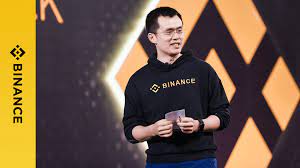I heard that as long as this technology matures, the centralized trading platform will disappear.
We often see the word " atomic exchange " in some blockchain media reports. So what does it mean?
Today, we will come to understand.
Atomic exchange is a point-to-point exchange of cryptocurrency from one party to another without the need for third-party services like cryptocurrency trading platforms. Throughout the process, the user completely controls and owns his private key.
Atomic exchange can be performed directly between different blockchains, so it is also known as cross-chain trading.
- State-owned enterprises enter! Blockchain application progress has exceeded 50 during the year
- Viewpoint | The boundaries between primary market and secondary market are slowly becoming blurred
- Market Analysis: Market sentiment still needs to be stable, BTC and mainstream currency enter the pending stage
So how does atomic exchange work?
 Source: https://www.hellobtc.com
Source: https://www.hellobtc.com
A very simple explanation is that the two parties that are going to exchange the atom decide a shared secret. The parties will share their cryptocurrency if and only if their secrets match.
Ok, now that you know the concept, but how does it actually work? Let's take a look at the specific process.
Zhang San has some BTCs, and Li Si has some LTCs. They wanted to exchange, so they opened a payment channel. The initiator of this exchange (assuming Zhang San) created a "contract address", which is like a multi-lock safe, responsible for depositing funds for two people.
By creating a contract address, Zhang San will deposit it into his BTC and generate a value that acts like a key, and the hash it generates is like a lock on a safe.
Then, Zhang San sent the hash to Li Si, who used Zhang San to generate a contract address for his hash and sent his LTC to the contract address. Only Zhang can unlock the LTC in this address because he has the private key that generated the particular hash.
Zhang San can obtain the LTC by signing the transaction at Li Si's contract address. When he unlocks the address, he displays the value to Li Si. Li Si, who obtains the value, can obtain the BTC by signing the transaction of the Zhang San contract address.
 Source: https://www.hellobtc.com
Source: https://www.hellobtc.com
The above process is the process of atomic exchange between Tokens on two different blockchains.
In atomic exchange, a very important technique is used: Hash time-locked contracts. For a detailed introduction to this technology, check out the tweet "Hash Locking of Cross-Chain Technology Solutions" before the vernacular blockchain .
The current blockchain faces two major challenges: scalability and interoperability. Through atomic exchange, we have a solution that can make two birds a stone.
The biggest advantage of atomic exchange is the opening of the DEX gate without trust. Atomic exchange eliminates the existence of third-party trading platforms and makes transactions as straightforward as possible, and you have complete control over your encrypted assets.
However, current atomic switching technologies also face three major limitations:
1. Applicability
The first limitation that atomic exchange faces in its current iteration is that two cryptographic assets need to satisfy three conditions for atomic exchange: cryptographic assets must have a hash algorithm inherent to both; both cryptographic assets must be able to start. Hash time locks the contract; must have specialized programming capabilities.
As of now, these features will greatly limit the amount of cryptographic assets actually participating in these exchanges. However, this is not the worst part. It also limits the number of companies and users who can now experiment with them. This will increase the time the public is accustomed to this new technology.
2, speed
In current iterations, atomic swaps still require a lot of refinement and enhancement before they become fast enough to process large amounts of data. Lightning networks can greatly help atomic exchanges in this regard.
3. Lack of compatibility
There are indeed more wallets that will use atomic switching technology, but in fact, the total number of compatible wallets and trading platforms is still very low.
If the atomic switching technology is mature and large-scale, what do you most want to use to realize the redemption of Token? Feel free to share your opinion in the message area.
——End——
Author | Wayne
Produced|Baihua blockchain (ID: hellobtc)
『Declaration : This series of content is only for the introduction of blockchain science, and does not constitute any investment advice or advice. If there are any errors or omissions, please leave a message. You are not allowed to reprint this article by any third party without the authorization of the "Baihua Blockchain" sourced from this article. 』
We will continue to update Blocking; if you have any questions or suggestions, please contact us!
Was this article helpful?
93 out of 132 found this helpful
Related articles
- Singapore Banking Corporation OCBC Bank joins JP Morgan Chase Blockchain Network
- Take bitcoin to pay? How much do you want to open?
- Interview RichPaxos Asia CEO Rich Teo: BTC is not really digital gold
- "The more the locks are, the higher the price is." It is definitely a false proposition.
- Staking, lending, DeFi detonate digital asset management, Shenyu, Zhao Dong and Pan Chao teach you how to play with ShenKnows
- Perspectives | The Future of PoC in the History of Capacity Proof (PoC)
- Following the legalization of mining, Iran intends to push the annual mining license






